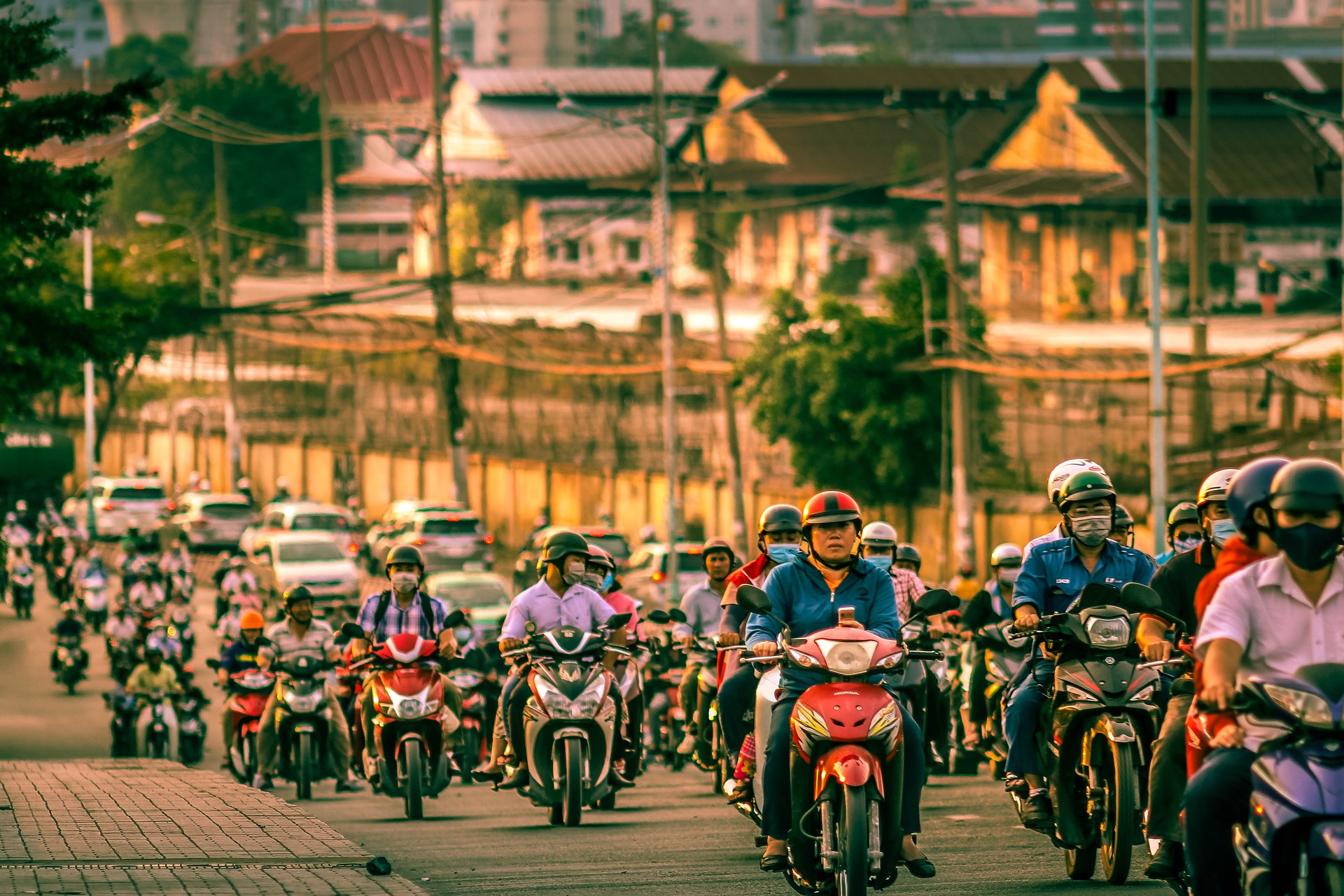Ah, Vietnam, the land of stunning landscapes, delicious phở, and traffic that makes New York City look like a quiet country town. But fear not, traveler, for this is your comprehensive guide to navigating Vietnam’s transport system like a pro!
City-to-City Travel
Navigating the length and breadth of this beautiful country can feel a bit like piecing together a jigsaw puzzle. With the country stretching over 1,000 miles from North to South, a well-thought-out travel plan can save you a great deal of time and energy. From the bustling metropolis of Hồ Chí Minh City to the tranquil beauty of Hội An, and the otherworldly landscapes of Hạ Long Bay, each city has its own unique charm and character. But, how do you journey from one city to another? Here will we break down the most popular methods of travel within Vietnam.
Air Transportation In Vietnam – Best For Large Distances

If you’re short on time or want to jump from Hanoi to Ho Chi Minh City (or vice versa) in a jiffy, flying is your best bet. Simply put, for long distances, nothing beats the efficiency of air travel.
Best Airlines in Vietnam
When it comes to flying the friendly skies of Vietnam, several domestic airlines offer top-notch service, competitive prices, and extensive routes. Here’s the lowdown on the top three airlines in Vietnam.
Vietnam Airlines
Considered the best airline of Vietnam, Vietnam Airlines offers the most extensive network of domestic routes. Flying with Vietnam Airlines, you can expect a high standard of service, reliable schedules, and a good safety record. Their fleet includes modern aircraft, ensuring a comfortable flight. If you’re looking to reach remote corners of Vietnam or want a touch of luxury with their business class, Vietnam Airlines is a stellar choice.
Fun fact: for those who love milk tea, Vietnam Airlines also sells milk tea that can be purchased in advance.
VietJet air
Are you a budget-savvy backpacker with a penchant for punctuality? Say hello to VietJet Air, Vietnam’s popular low-cost airline. VietJet Air has quickly gained a reputation for its affordable fares, youthful vibe, and an extensive network of routes. Notably, they’ve managed to strike a balance between cost-saving and maintaining a decent level of service and safety. So, if you’re watching your wallet, VietJet Air might be your go-to.
Bamboo Airways
The new kid on the block, Bamboo Airways, has quickly made a name for itself in the Vietnamese aviation sector. This hybrid airline offers the affordability of a low-cost carrier with the service and perks of a traditional airline. They’re known for their friendly service, comfortable seating, and an impressive track record for on-time departures. If you’re up for trying something new, give Bamboo Airways a whirl.
So, whether you’re prioritizing cost, comfort, or convenience, Vietnam’s airlines have got you covered. Buckle up, sit back, and enjoy your flight!
Vietnamese Plane Ticket Prices
The cost of a one-way ticket can vary significantly depending on the time of year, the airline, and how far in advance you book. Generally, for domestic flights, you can expect to pay anywhere from 700,000 to 2,000,000 VND (around $30 – $85 USD) for a one-way ticket between Hanoi and Ho Chi Minh City. Pro-tip: avoid traveling during Tết (Vietnamese New Year), when prices skyrocket. It’s always a good idea to check multiple airlines and be flexible with your dates and times, as prices can fluctuate. International flights will vary by much more, depending on your final destination.
Best Vietnamese Plane Ticket Booking Sites
You can book directly through the airlines’ websites, but for the best deals, it’s often worth checking out booking sites. Websites like Skyscanner, Expedia, and Kayak are well-established, but it’s also worth looking at Vietnamese-based sites such as Vntrip and Chudu24.
Always remember to cross-check the prices on multiple platforms before finalizing your purchase. And don’t forget to look out for flash sales, which can offer jaw-dropping discounts if you’re lucky.
So, there you have it – the sky-high scoop on plane travel in Vietnam. Next stop, bus transportation. But that’s a tale for another day. For now, keep those wings of adventure spread wide, and let Vietnam’s cities draw you into their mesmerizing embrace.
Vietnamese Bus And Coach Transportation – Good For City Hopping
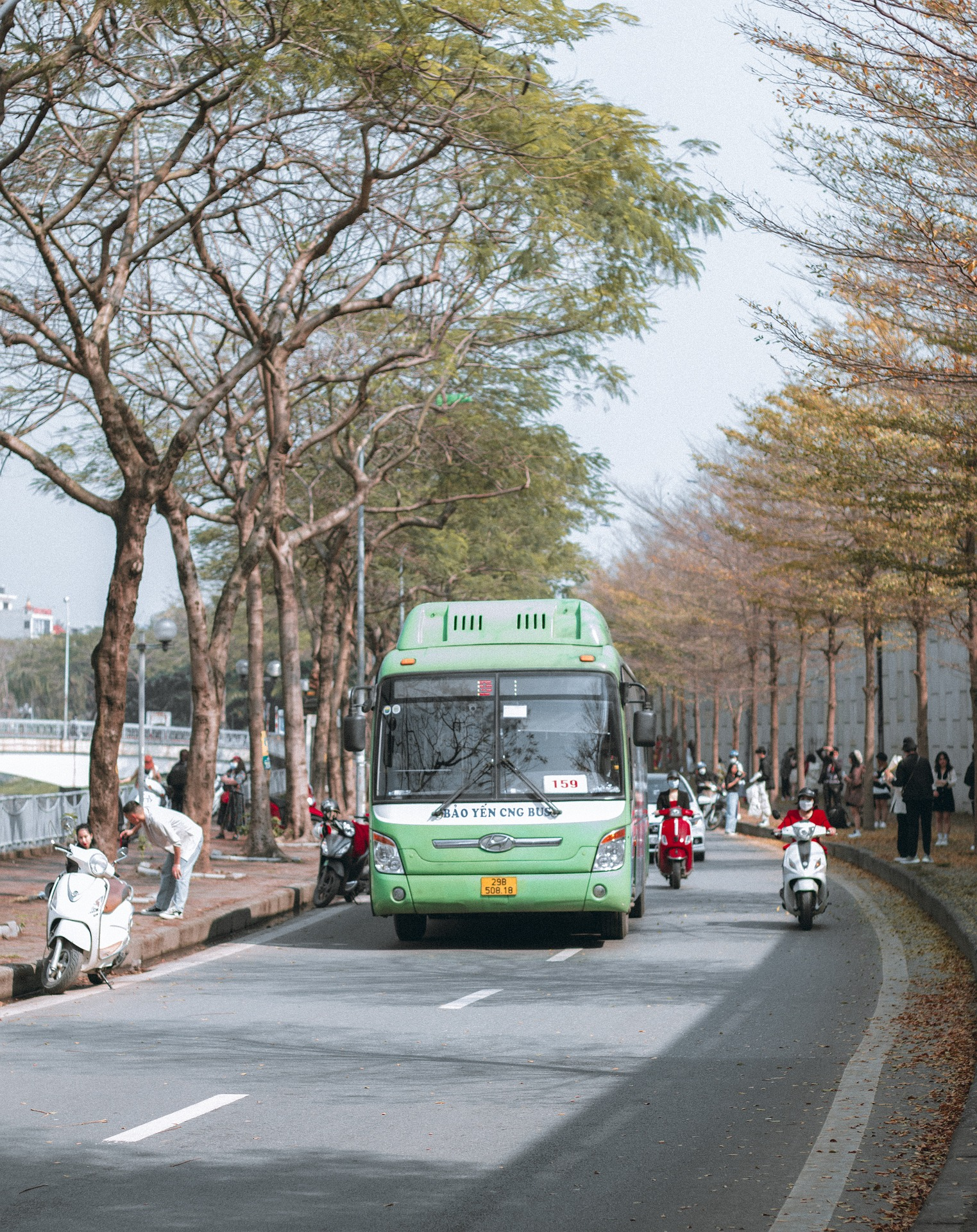
Well, now, after our high-flying adventures, let’s come back down to earth with a bump, and explore a more grounded mode of transport – the humble bus. If you’re a savvy backpacker who doesn’t mind a slower pace (and an opportunity to admire the scenery), then buses and coaches are a cost-effective and incredibly local way to city-hop.
These road warriors crisscross the country, from the karst mountains of the north to the Mekong Delta in the south, offering a view of Vietnam that’s up close and personal. They may not be the fastest option, but sometimes, the journey is as exciting as the destination, right?
It is also worth mentioning that some areas in Vietnam, such as Ha Giang, pictured below, are only accessible by bus.
Popular Bus Routes in Vietnam

Vietnam’s long and slender geography lends itself well to a linear travel route. Most backpackers start their journey in Hanoi or Hồ Chí Minh City and make their way up or down the country, hitting major cities and tourist hotspots along the way.
A typical route might include Hanoi – Ninh Bình – Phong Nha – Huế – Đà Nẵng – Hội An – Nha Trang – Đà Lạt – Mũi Né – Hồ Chí Minh City. Each leg of this journey is well-served by buses, so you’ll never be short of options.
Public vs Private Buses for City Hopping
Both public buses and private buses have their pros and cons, so let’s break it down to help you choose the best ride for your adventure.
Public Buses
Public buses are an integral part of Vietnam’s transportation system. They’re incredibly affordable, making them a favorite among locals and budget-conscious travelers. They cover numerous routes, reaching even the most remote corners of the country. Riding a public bus offers an unfiltered glimpse into Vietnamese life, adding a dash of local flavor to your journey. However, public buses may not offer the level of comfort some travelers might be used to. They can be crowded, especially during peak hours, and the ride can be a bit bumpy. Also, don’t expect luxury amenities like air conditioning or reclining seats. Moreover, if you are really on a budget, this can help you save money.
Private Buses
On the other hand, private buses, often referred to as “tourist” or “sleeper” buses, cater primarily to tourists. They’re more expensive than public buses but offer a higher level of comfort. These buses often feature reclining seats, air conditioning, and sometimes even complimentary Wi-Fi and water. Some long-distance buses even offer “bed” seats for overnight journeys. Private bus companies usually offer hotel pick-ups and drop-offs, saving you the hassle of navigating to and from bus stations. However, it’s worth noting that while these buses are generally safe, it’s still important to keep an eye on your belongings.
So, public or private? If you’re traveling on a shoestring budget and looking for a local experience, public buses are the way to go. But if comfort and convenience top your priority list, private buses might be worth the extra money. Either way, traversing Vietnam by bus is a journey you won’t forget!
Best Vietnamese Bus Companies
While there are countless bus companies operating in Vietnam, some are more backpacker-friendly than others. The Sinh Tourist and Futa Bus Lines (Phương Trang) are two highly popular choices among travelers, known for their reliability and relatively comfortable seating.
For the more adventurous, there’s the “sleeper bus” option offered by companies like Hung Thanh and Queen Cafe VIP Bus. These buses feature fully-reclining seats (think budget business class), providing a unique overnight travel experience. However, be prepared for a snug fit, as these buses are designed with the average Vietnamese height in mind. Moreover, these sleep busses are still very affordable and you don’t even need to visit go to the bus station as they will pick you up from your hotel. Well, it is more of a calm pickup, and a bit more of a sprint and takeoff. For reference, a bus trip from Hà Nội to Ha Giang takes about 6 hours, but only costs around $15 to $20 USD.
Traveling By Train – Comfortable Transportation With A View

Next stop, the railroad! If you’re a romantic at heart, there’s something undeniably charming about traveling by train. It’s a mode of transport that harks back to a bygone era, and in Vietnam, it’s a splendid way to soak in the diverse landscapes at a leisurely pace.
The Vietnamese rail network, lovingly known as the Reunification Express, links Hanoi in the north to Hồ Chí Minh City in the south, chugging along a single, narrow-gauge track. It’s not the fastest or the cheapest option, but it offers a priceless opportunity to see the countryside, the coastline, and everything in between, in a way no other mode of transport can match.
So, take a step back, kick your feet up, and let the rhythm of the rails lull you into a state of tranquil enjoyment. Remember, in Vietnam, the journey is not just about reaching your destination; it’s about the stories, the people, and the experiences along the way. And on that note, stay tuned for our next chapter, where we’ll explore the exhilarating world of motorbikes. Stay adventurous, my friend!
Motorbike Transport in Vietnam
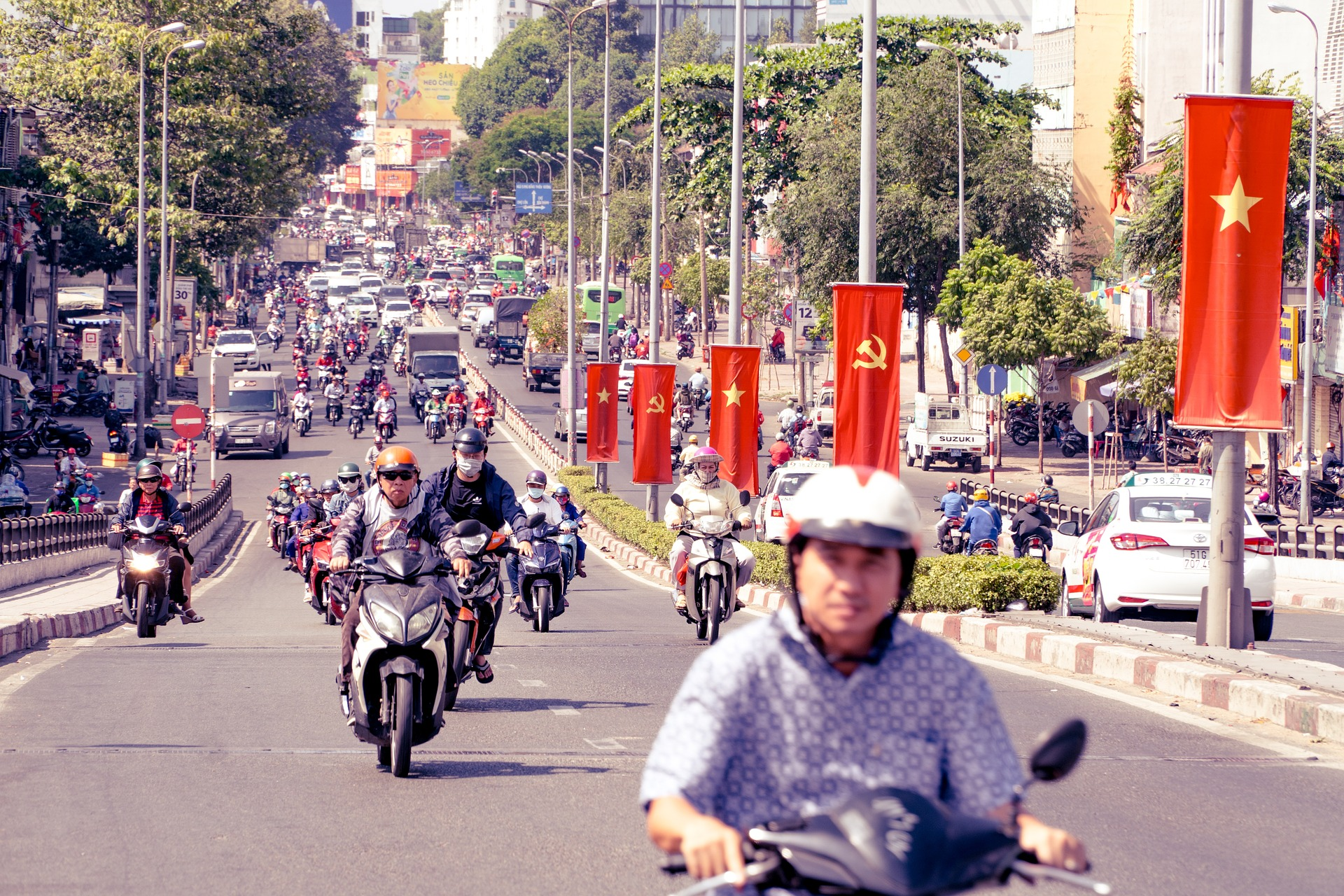
No guide to transport in Vietnam, or Southeast Asia, is complete without discussing motorbikes. Here, motorbikes rule the road with an unruly charm that is both thrilling and, let’s be honest, a little bit terrifying. Zipping around on a motorbike is the quintessential Vietnamese experience, and if you’re brave enough to give it a go, it’s a freedom like no other.
Vietnam Motorbike Tour Packages
For those who want to experience the thrill of motorbiking without the worry of navigation or mechanical issues, a guided motorbike tour could be just the ticket. Companies like Easy Riders, Vietnam Motorbike Tours, and Flamingo Travel offer a range of tours that cater to different skill levels and interests. These tours can take you off the beaten track to places you might not discover on your own, with the added bonus of a local guide who can provide cultural insights and handle any bike troubles.
Rental Motorbike/Bicycle
If you’re more of a lone wolf, renting a motorbike or bicycle is a great option. Many guesthouses, hotels, and specialized rental shops offer daily or monthly rentals. Do remember to check the condition of the bike before you take off, and always wear a helmet. It’s not just the law – it’s a good idea!
Vietnam Motorbike Rental Prices
Renting a motorbike in Vietnam is surprisingly affordable. A daily rental can range from 100,000 to 200,000 VND ($4 to $9) depending on the type and quality of the bike. Monthly rentals provide even better value, with prices ranging from 1,000,000 to 2,000,000 VND ($45 to $90).
Vietnamese Gas Pumps – Not Self Service
Here’s a fun fact: gas stations in Vietnam are not self-service. That’s right, just pull up to the pump and a friendly attendant will fill ‘er up for you. It’s a full-service experience, so sit back and enjoy the break. And remember, gasoline is sold by the liter here, with prices fluctuating around 20,000 VND ($0.85) per liter.
Getting Around Vietnam’s Cities
Now that we’ve conquered the country’s wide-open spaces, let’s dive into the beating heart of Vietnam: its bustling cities. Vietnam’s urban centers, with their frenetic energy and organized chaos, offer a different kind of adventure. Here, we’ll explore the best ways to navigate these concrete jungles and their legendary traffic.
The Thrill of the Ride: A Brief Introduction to Vietnam’s Traffic
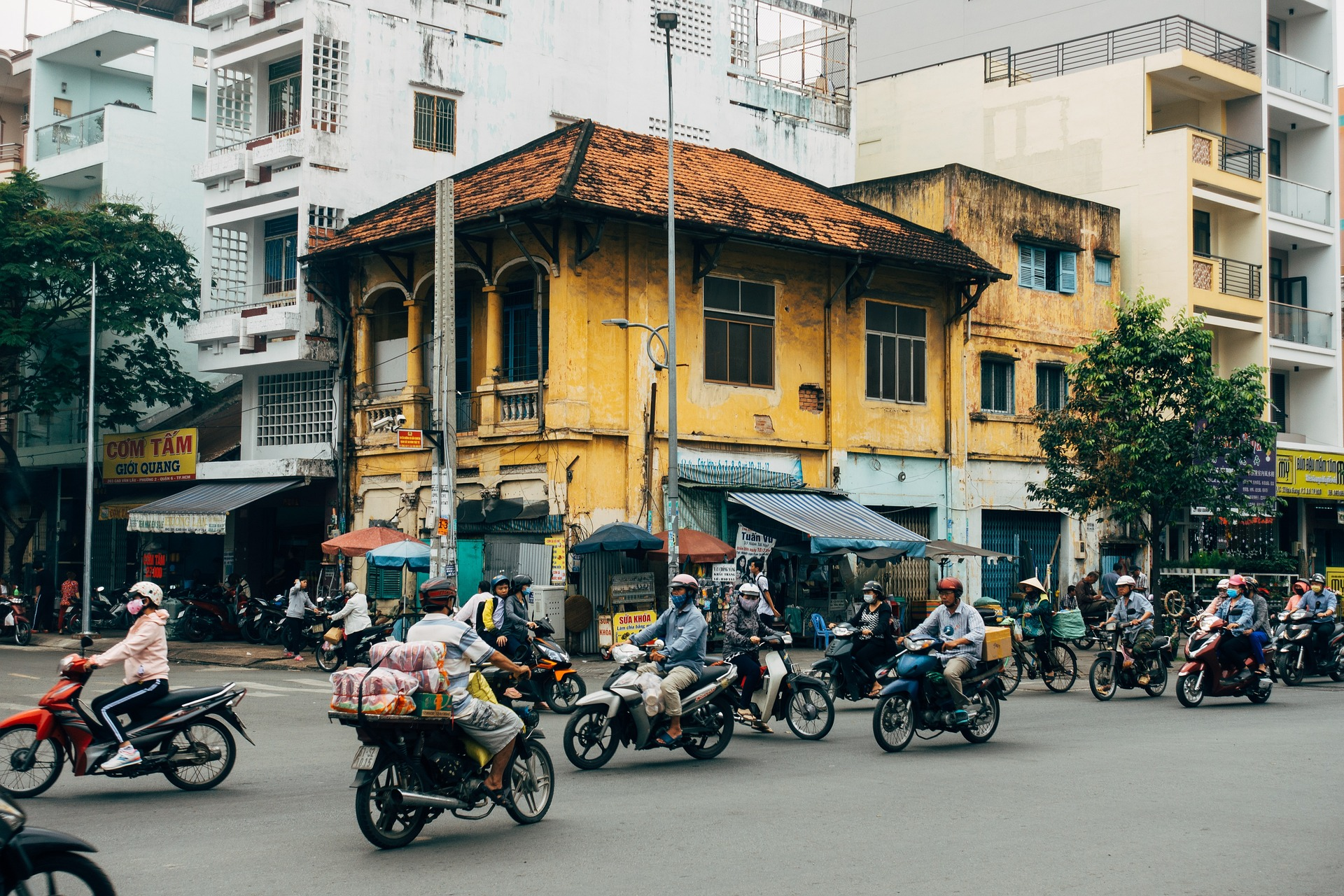
Let’s cut to the chase: traffic in Vietnam’s cities, particularly in Hanoi and Hồ Chí Minh City, is an experience unto itself. Picture a swirling whirlpool of motorbikes, cars, bicycles, and pedestrians, all moving in what appears to be a chaotic ballet, punctuated by a constant chorus of honks. It’s a sight to behold and, believe it or not, there’s a method to this madness. It’s all about going with the flow, both figuratively and literally.
Ride Hailing Apps
Navigating Vietnam’s city streets is made much easier thanks to technology. A number of ride-hailing apps are available, offering a convenient and often cheaper alternative to traditional taxis. Let’s delve into a few of the most popular ones. These apps also provide unparalleled transparency in terms of pricing. These apps are often a great way to save money as you don’t have to exchange currency, which can often be costly, and instead you can get the rate provided by your credit or debit card, some of which offer no fee for foreign transactions.
GRAB
Grab, the Southeast Asian giant, is the go-to app for many locals and tourists alike. It offers a multitude of services, including motorbike taxis (GrabBike), car taxis (GrabCar), and even food delivery (GrabFood). The app is user-friendly and offers the option of cashless payments, which is a boon in this largely cash-based society.
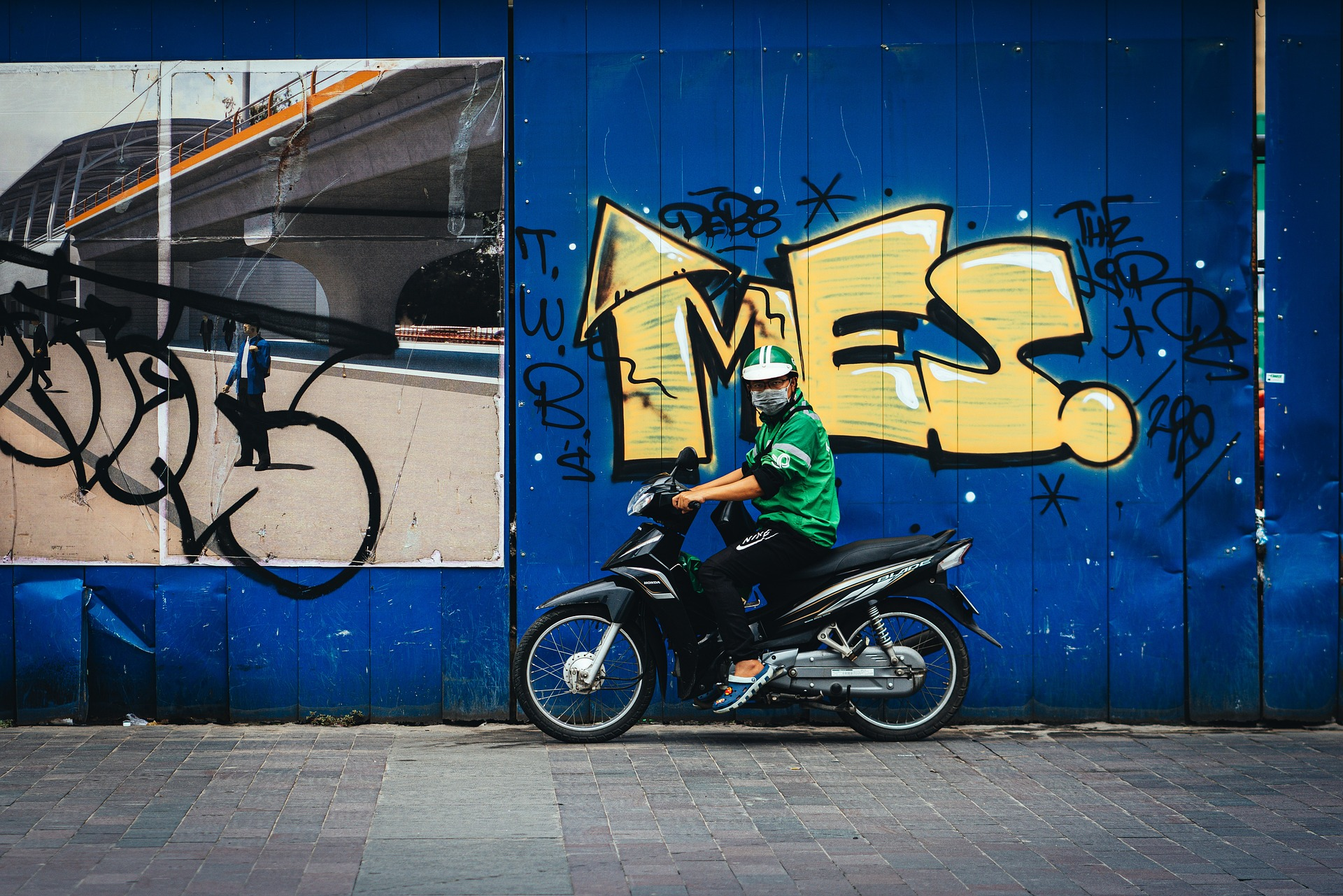
Gojek
Gojek, originally from Indonesia, is another popular choice. Like Grab, it offers a variety of services, including motorbike and car taxis. One notable feature of Gojek is its “GoSend” service, which is essentially a courier service – handy if you need to send a parcel or forget your sunglasses at the hotel.
Be Ride-Hailing App
Be is a Vietnamese ride-hailing app, a local contender in the game. It boasts a large fleet of drivers and offers competitive prices. As a homegrown app, using Be is also a great way to support local businesses.
Taxis
Despite the rising popularity of ride-hailing apps, traditional taxis are still a common sight on the streets of Vietnam’s cities. Although, there is a lot more to watch out for.
Vietnamese Taxis: Cars Vs Motorbikes
When it comes to taxis, you have two main options: cars and motorbikes. Car taxis, such as Vinasun and Mai Linh, are reliable choices and are available in most cities. They’re metered, air-conditioned, and can offer a comfortable respite from the heat and noise outside.
On the other hand, motorbike taxis, or “xe ôm”, offer a more thrilling, wind-in-your-hair kind of experience. They’re a great option for short distances and tight traffic, but be prepared for an adrenaline rush!
Whether you choose a traditional taxi or a ride-hailing app, always make sure to buckle up (helmet included!) and hold on tight. The thrills of navigating Vietnam’s cities are just beginning.
Vietnamese Motorbike and Car Taxi Prices
Motorbike taxis, or “xe ôm”, are a common sight in Vietnamese cities. These guys can weave through traffic like nobody’s business, making them a speedy and affordable choice for short trips. Prices typically start at 10,000 to 15,000 VND ($0.40 to $0.65) for a short journey, but always agree on a price before you hop on. Car taxis, on the other hand, are pricier but provide more comfort and safety. They run by the meter, with fares starting around 12,000 to 15,000 VND ($0.50 to $0.65) per kilometer.
Avoiding Taxi Scams
Alright, it’s time for a little heart-to-heart about taxi scams. They’re an unfortunate reality in many tourist destinations worldwide, and Vietnam is no exception. But fear not! With a few handy tips, you can navigate your way around these pitfalls like a pro.
Firstly, always use reputable taxi companies like Mai Linh or Vinasun. These companies use meters and are generally trustworthy. If a taxi doesn’t have a meter or the driver refuses to use it, that’s your cue to find another ride.
Secondly, beware of “turbo” meters that seem to rack up the fare faster than a speeding bullet. If the meter is ticking up at an alarming rate, it could be rigged. If you suspect foul play, take a photo of the taxi’s license plate and report it to the local authorities.
Finally, always have small bills on hand. Some dishonest taxi drivers might claim they don’t have change in hopes of keeping the extra cash. By having exact or near-exact fare, you can avoid this situation. Remember, forewarned is forearmed!
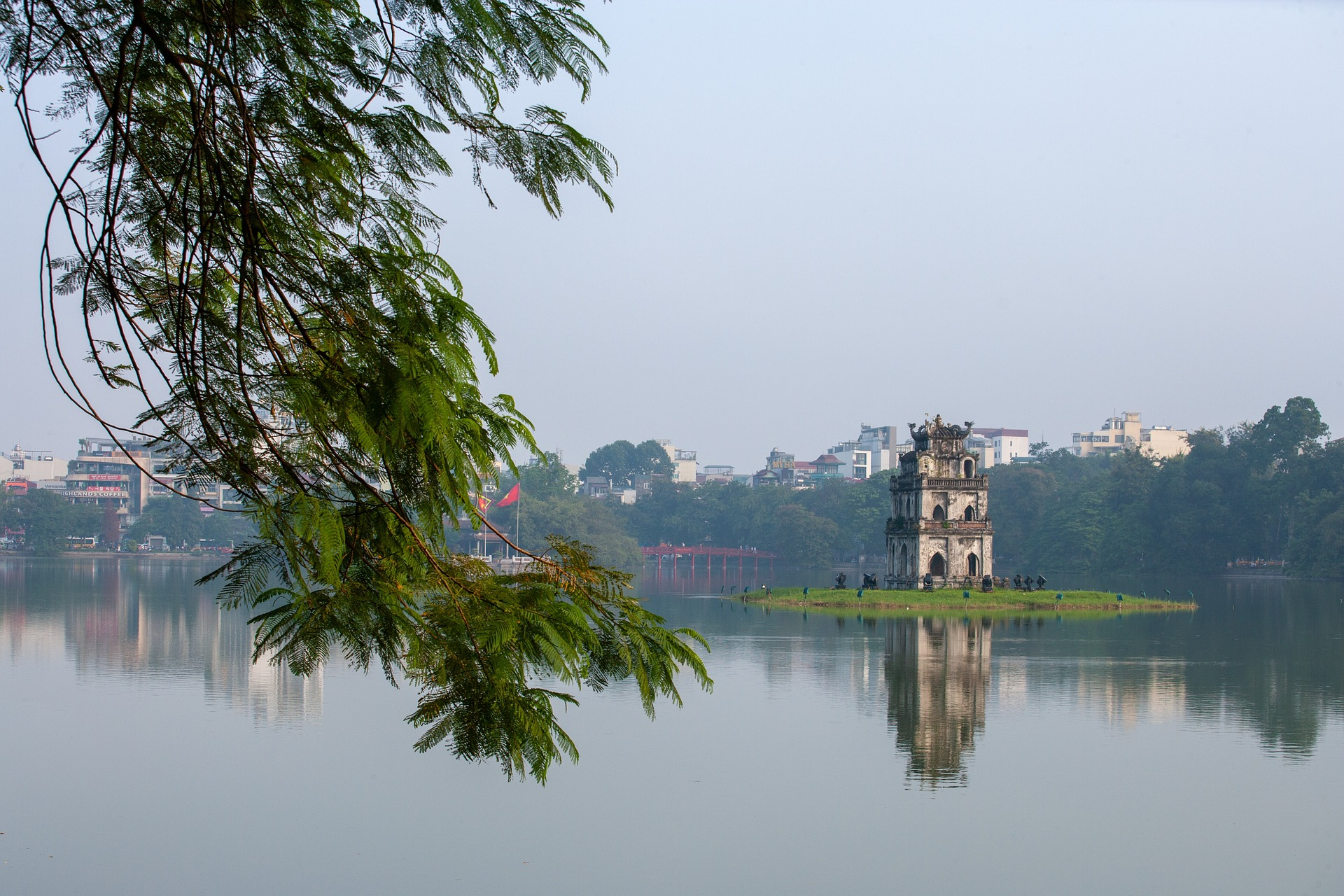
Walking
Let’s not forget about the most eco-friendly and budget-friendly mode of transport: your own two feet! Walking is an excellent way to explore Vietnam’s cities, as it allows you to discover hidden gems and observe local life up close. However, crossing the street can feel like a game of Frogger, so here’s a tip: maintain a steady and predictable pace, and the river of motorbikes will flow around you. It’s a bit of an art form, but you’ll soon get the hang of it!
Consider planning walking friendly activities as well. For instance, Hoan Kiem lake in Hanoi has traffic blocked off on the weekend. This makes it a very lively place with locals and tourists alike coming to enjoy and the space, walk, and of course, eat delicious food.
Unique Vietnamese Transport Experiences
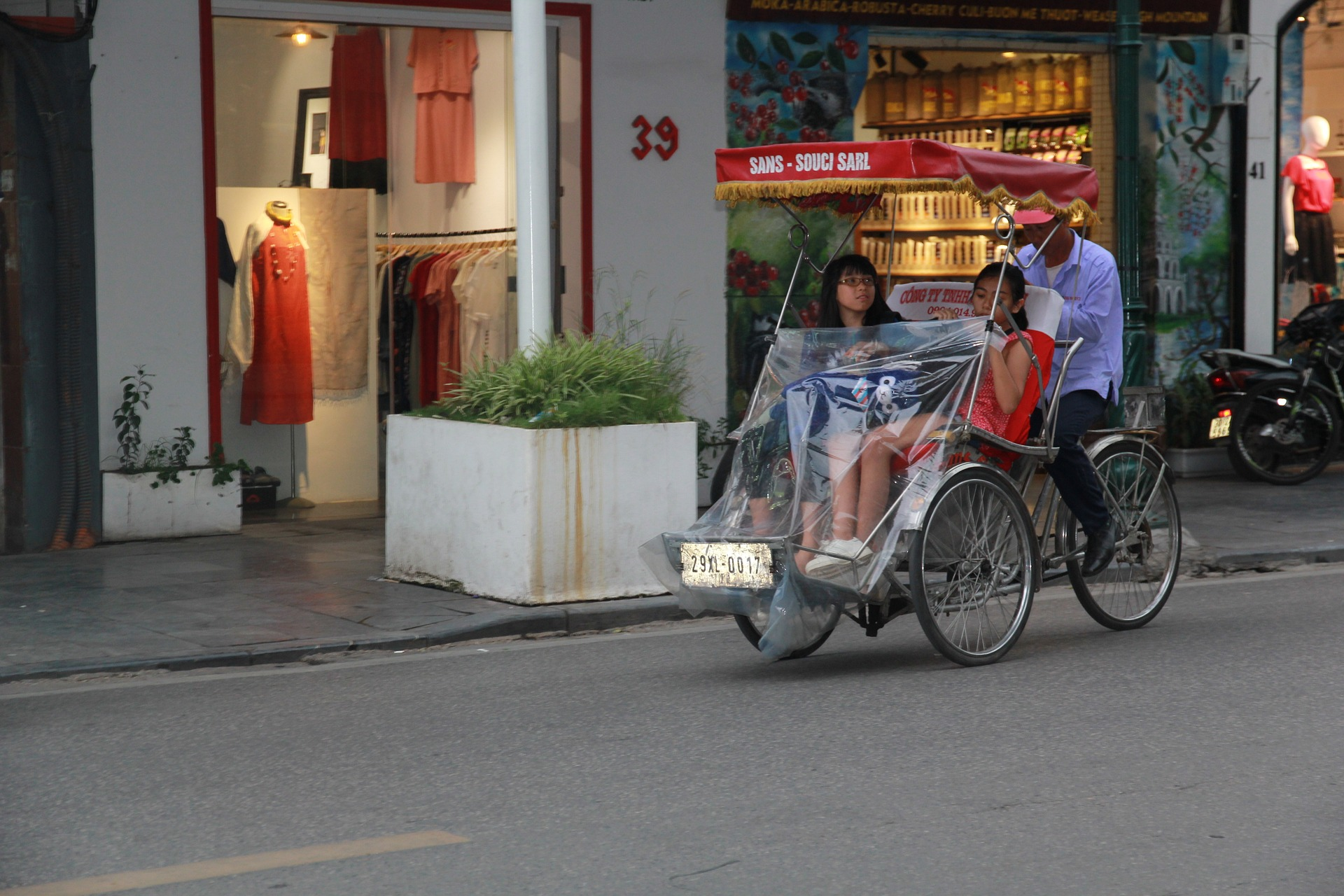
While we’ve covered the main forms of transport in Vietnam, there are a few unique experiences that deserve a special mention. Ever ridden a cyclo? These three-wheeled bicycle taxis offer a leisurely tour of the city streets. How about a basket boat ride? These round, bamboo boats, known as “thúng chai,” provide a unique way to explore Vietnam’s waterways. And let’s not forget the iconic Vietnamese “xe lôi,” or motorized tricycle. Each of these experiences offers a unique perspective and a taste of local life.
Tips and Tricks for Navigating Vietnam’s Transportation System
And now, to wrap up our guide, here are a few final pearls of wisdom for navigating Vietnam’s transportation system.
Patience is key: Whether you’re waiting for a bus or navigating traffic, remember that things may not always run on schedule. Embrace the unpredictability as part of the adventure.
Stay safe: Always wear a helmet when riding a motorbike or bicycle, and buckle up in cars.
Negotiate fares: For motorbike taxis and cyclos, make sure to agree on a price before your journey begins.
Use technology: Apps like Grab, Gojek, and Be can make navigating the cities a breeze.
Enjoy the journey: Remember, getting there is half the fun. So sit back, relax, and enjoy the ride!
With these tips in your backpack, you’re ready to take on the roads, skies, and seas of Vietnam. Happy travels, my friend!
Frequently Asked Questions
Navigating a new country’s transportation system can be daunting, and you might have a few questions. We’ve compiled some of the most frequently asked questions about traveling in Vietnam to help you out.
Should You Travel by Car or Motorbike Taxi in Vietnam?
The choice between a car and a motorbike taxi in Vietnam really depends on your comfort level, distance, and the nature of the journey. If you’re traveling a short distance or in a hurry, a motorbike taxi might be a quicker option because they can weave through traffic. However, if you’re not comfortable on a motorbike or you have a lot of luggage, a car taxi would be a safer and more comfortable choice.
Do you need an International Driver’s Permit to rent a motorbike in Vietnam?
Technically, yes. An International Driver’s Permit (IDP) along with your home country’s driving license is required to legally drive in Vietnam. However, enforcement varies, and many rental companies don’t ask for an IDP. It’s important to note that without a valid IDP, your travel insurance may not cover you in case of an accident.
Can you use Uber in Vietnam?
As of 2018, Uber has exited Southeast Asia, including Vietnam. However, there are plenty of alternative ride-hailing apps available, like Grab, Gojek, and Be.
Is it safe to take overnight buses or trains in Vietnam?
Yes, generally, night buses and trains in Vietnam are safe and a popular choice for long distances as they save you a night’s accommodation. However, remember to keep your valuables close and be aware of your surroundings. Opt for reputable companies and consider purchasing a berth in a sleeper car on trains for more comfort.
How do you cross the road in Vietnam?
Ah, the million-dollar question! Crossing the road in Vietnam can be a nerve-racking experience, especially in busy cities like Hanoi and Hồ Chí Minh City. The trick is to walk slowly and steadily, allowing the traffic to flow around you. Never run or suddenly change direction.
Remember, traveling in a new country always comes with its challenges, but it’s all part of the adventure. Armed with these tips and tricks, you’ll be navigating Vietnam like a local in no time. Happy travels!
